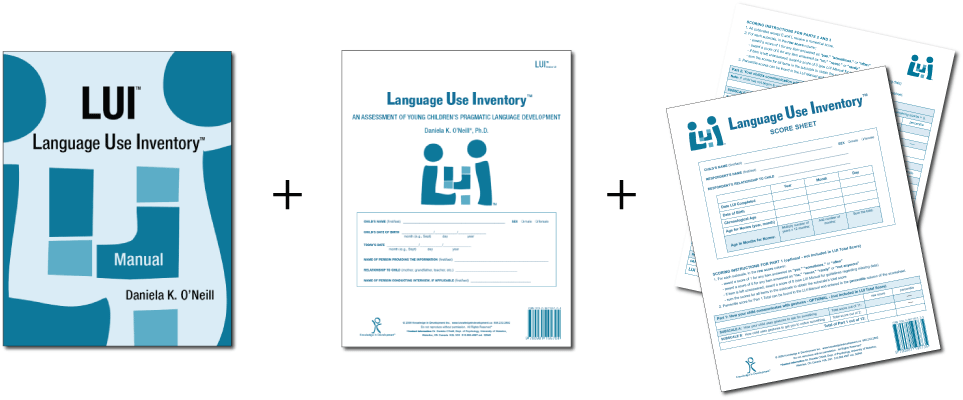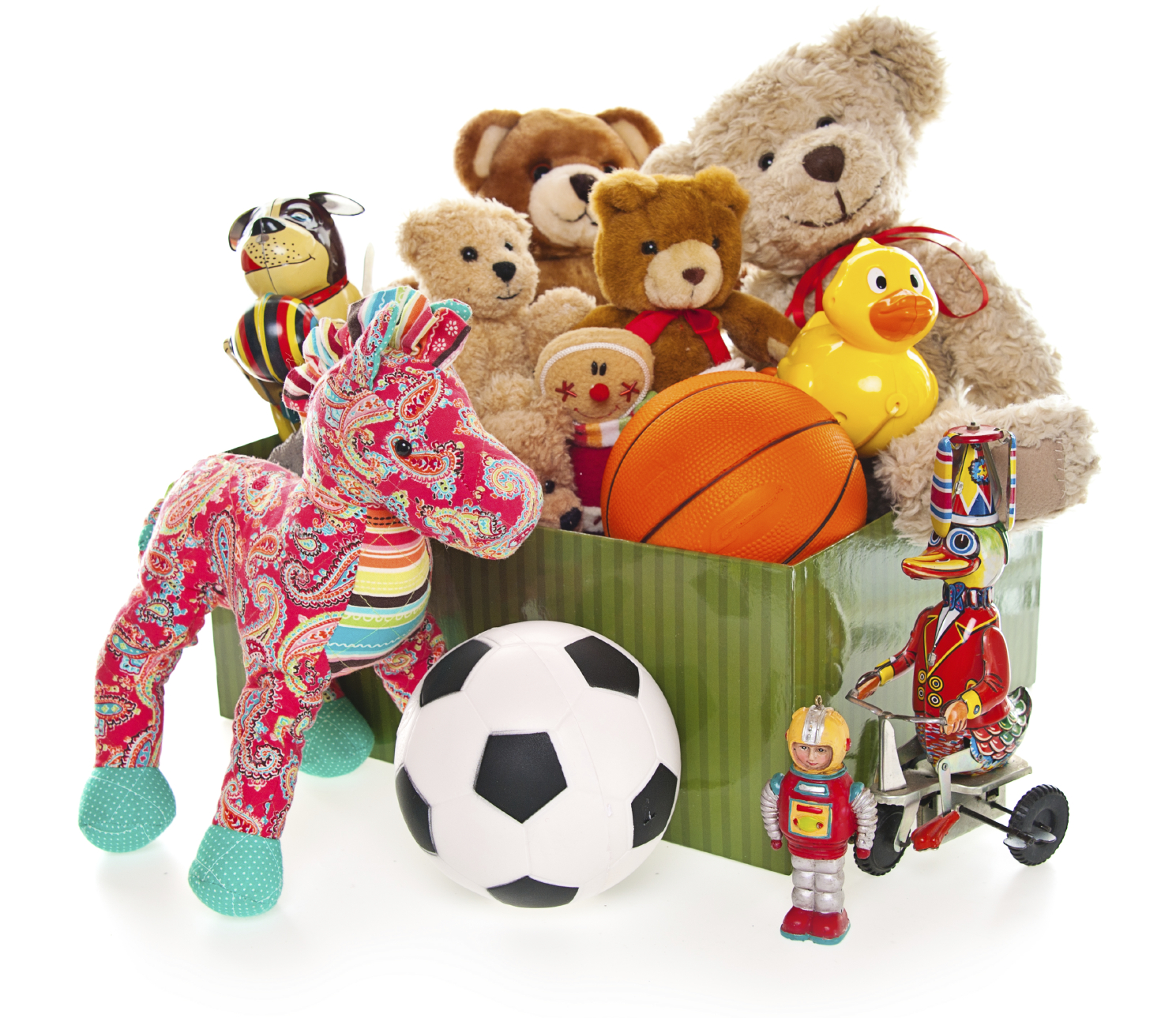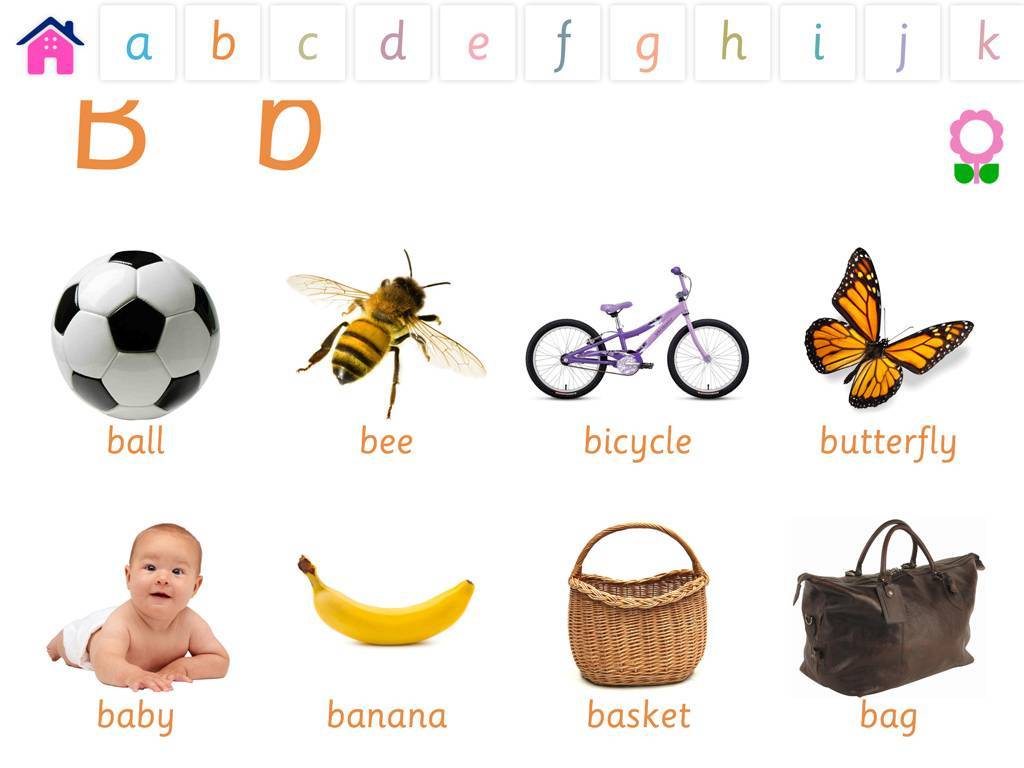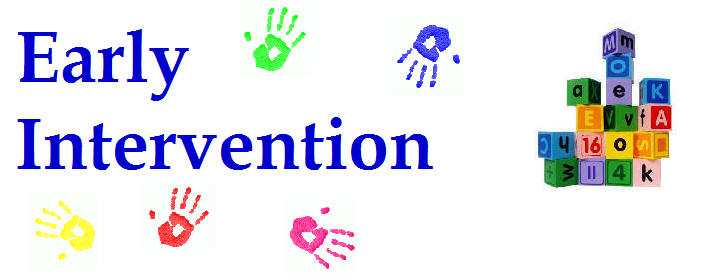 To date, I have written 3 posts on speech and language assessments of children under 3 years of age. My first post offered suggestions on what information to include in general speech-language assessments for this age group, my second post specifically discussed assessments of toddlers with suspected motor speech disorders and my third post described what information I tend to include in reports for children ~16-18 months of age.
To date, I have written 3 posts on speech and language assessments of children under 3 years of age. My first post offered suggestions on what information to include in general speech-language assessments for this age group, my second post specifically discussed assessments of toddlers with suspected motor speech disorders and my third post described what information I tend to include in reports for children ~16-18 months of age.
Today, I’d like to offer some suggestions on the assessment of social emotional functioning and pragmatics of children, ages 3 and under.
For starters, below is the information I found compiled by a number of researchers on select social pragmatic milestones for the 0-3 age group:
- Peters, Kimberly (2013) Hierarchy of Social/Pragmatic Skills as Related to the Development of Executive Function


- Hutchins & Prelock, (2016) Select Social Cognitive Milestones from the Theory of Mind Atlas

3. Development of Theory of Mind (Westby, 2014)
In my social pragmatic assessments of the 0-3 population, in addition, to the child’s adaptive behavior during the assessment, I also describe the child’s joint attention, social emotional reciprocity, as well as social referencing abilities.
Joint attention is the shared focus of two individuals on an object. Responding to joint attention refers to the child’s ability to follow the direction of the gaze and gestures of others in order to share a common point of reference. Initiating joint attention involves child’s use of gestures and eye contact to direct others’ attention to objects, to events, and to themselves. The function of initiating joint attention is to show or spontaneously seek to share interests or pleasurable experience with others. (Mundy, et al, 2007)
Social emotional reciprocity involves being aware of the emotional and interpersonal cues of others, appropriately interpreting those cues, responding appropriately to what is interpreted as well as being motivated to engage in social interactions with others (LaRocque and Leach,2009).
Social referencing refers to a child’s ability to look at a caregiver’s cues such as facial expressions, body language and tone of voice in an ambiguous situation in order to obtain clarifying information. (Walden & Ogan, 1988)
Here’s a brief excerpt from an evaluation of a child ~18 months of age:
“RA’s joint attention skills, social emotional reciprocity as well as social referencing were judged to be appropriate for his age. For example, when Ms. N let in the family dog from the deck into the assessment room, RA immediately noted that the dog wanted to exit the room and go into the hallway. However, the door leading to the hallway was closed. RA came up to the closed door and attempted to reach the doorknob. When RA realized that he cannot reach to the doorknob to let the dog out, he excitedly vocalized to get Ms. N’s attention, and then indicated to her in gestures that the dog wanted to leave the room.”
 If I happen to know that a child is highly verbal, I may actually include a narrative assessment, when evaluating toddlers in the 2-3 age group. Now, of course, true narratives do not develop in children until they are bit older. However, it is possible to limitedly assess the narrative abilities of verbal children in this age group. According to Hedberg & Westby (1993) typically developing 2-year-old children are at the Heaps Stage of narrative development characterized by
If I happen to know that a child is highly verbal, I may actually include a narrative assessment, when evaluating toddlers in the 2-3 age group. Now, of course, true narratives do not develop in children until they are bit older. However, it is possible to limitedly assess the narrative abilities of verbal children in this age group. According to Hedberg & Westby (1993) typically developing 2-year-old children are at the Heaps Stage of narrative development characterized by
- Storytelling in the form of a collection of unrelated ideas which consist of labeling and describing events
- Frequent switch of topic is evident with lack of central theme and cohesive devices
- The sentences are usually simple declarations which contain repetitive syntax and use of present or present progressive tenses
- In this stage, children possess limited understanding that the character on the next page is still same as on the previous page
In contrast, though typically developing children between 2-3 years of age in the Sequences Stage of narrative development still arbitrarily link story elements together without transitions, they can:
- Label and describe events about a central theme with stories that may contain a central character, topic, or setting
 To illustrate, below is a narrative sample from a typically developing 2-year-old child based on the Mercer Mayer’s classic wordless picture book: “Frog Where Are You?”
To illustrate, below is a narrative sample from a typically developing 2-year-old child based on the Mercer Mayer’s classic wordless picture book: “Frog Where Are You?”
- He put a froggy in there
- He’s sleeping
- Froggy came out
- Where did did froggy go?
- Now the dog fell out
- Then he got him
- You are a silly dog
- And then
- where did froggy go?
- In in there
- Up up into the tree
- Up there an owl
- Froggy
- A reindeer caught him
- Then he dropped him
- Then he went into snow
- And then he cleaned up that
- Then stopped right there and see what wha wha wha what he found
- He found two froggies
- They lived happily ever after
 Of course, a play assessment for this age group is a must. Since, in my first post, I offered a play skills excerpt from one of my early intervention assessments and in my third blog post, I included a link to the Revised Westby Play Scale (Westby, 2000), I will now move on to the description of a few formal instruments I find very useful for this age group.
Of course, a play assessment for this age group is a must. Since, in my first post, I offered a play skills excerpt from one of my early intervention assessments and in my third blog post, I included a link to the Revised Westby Play Scale (Westby, 2000), I will now move on to the description of a few formal instruments I find very useful for this age group.
While some criterion-referenced instruments such as the Rossetti, contain sections on Interaction-Attachment and Pragmatics, there are other assessments which I prefer for evaluating social cognition and pragmatic abilities of toddlers.
 For toddlers 18+months of age, I like using the Language Use Inventory (LUI) (O’Neill, 2009) which is administered in the form of a parental questionnaire that can be completed in approximately 20 minutes. Aimed at identifying children with delay/impairment in pragmatic language development it contains 180 questions and divided into 3 parts and 14 subscales including:
For toddlers 18+months of age, I like using the Language Use Inventory (LUI) (O’Neill, 2009) which is administered in the form of a parental questionnaire that can be completed in approximately 20 minutes. Aimed at identifying children with delay/impairment in pragmatic language development it contains 180 questions and divided into 3 parts and 14 subscales including:
- Communication w/t gestures
- Communication w/t words
- Longer sentences
Therapists can utilize the Automated Score Calculator, which accompanies the LUI in order to generate several pages write up or summarize the main points of the LUI’s findings in their evaluation reports.
Below is an example of a summary I wrote for one of my past clients, 35 months of age.
AN’s ability to use language was assessed via the administration of the Language Use Inventory (LUI). The LUI is a standardized parental questionnaire for children ages 18-47 months aimed at identifying children with delay/impairment in pragmatic language development. Composed of 3 parts and 14 subscales it focuses on how the child communicates with gestures, words and longer sentences.
On the LUI, AN obtained a raw score of 53 and a percentile rank of <1, indicating profoundly impaired performance in the area of language use. While AN scored in the average range in the area of varied word use, deficits were noted with requesting help, word usage for notice, lack of questions and comments regarding self and others, lack of reciprocal word usage in activities with others, humor relatedness, adapting to conversations to others, as well as difficulties with building longer sentences and stories.
Based on above results AN presents with significant social pragmatic language weaknesses characterized by impaired ability to use language for a variety of language functions (initiate, comment, request, etc), lack of reciprocal word usage in activities with others, humor relatedness, lack of conversational abilities, as well as difficulty with spontaneous sentence and story formulation as is appropriate for a child his age. Therapeutic intervention is strongly recommended to improve AN’s social pragmatic abilities.
 In addition to the LUI, I recently discovered the Theory of Mind Inventory-2. The ToMI-2 was developed on a normative sample of children ages 2 – 13 years. For children between 2-3 years of age, it offers a 14 question Toddler Screen (shared here with author’s permission). While due to the recency of my discovery, I have yet to use it on an actual client, I did have fun creating a report with it on a fake client.
In addition to the LUI, I recently discovered the Theory of Mind Inventory-2. The ToMI-2 was developed on a normative sample of children ages 2 – 13 years. For children between 2-3 years of age, it offers a 14 question Toddler Screen (shared here with author’s permission). While due to the recency of my discovery, I have yet to use it on an actual client, I did have fun creating a report with it on a fake client.
First, I filled out the online version of the 14 question Toddler Screen (paper version embedded in the link above for illustration purposes). Typically the parents are asked to place slashes on the form in relevant areas, however, the online version requested that I use numerals to rate skill acquisition, which is what I had done. After I had entered the data, the system generated a relevant report for my imaginary client. In addition to the demographic section, the report generated the following information (below):
- A bar graph of the client’s skills breakdown in the developed, undecided and undeveloped ranges of the early ToM development scale.
- Percentile scores of how the client did in the each of the 14 early ToM measures
- Median percentiles of scores
- Table for treatment planning broken down into strengths and challenges
I find the information provided to me by the Toddler Screen highly useful for assessment and treatment planning purposes and definitely have plans on using this portion of the TOM-2 Inventory as part of my future toddler evaluations.
Of course, the above instruments are only two of many, aimed at assessing social pragmatic abilities of children under 3 years of age, so I’d like to hear from you! What formal and informal instruments are you using to assess social pragmatic abilities of children under 3 years of age? Do you have a favorite one, and if so, why do you like it?
References:
- Hedberg, N.L., & Westby, C.E. (1993). Analyzing story-telling skills: Theory to practice. AZ: Communication Skill Builders.
- Mundy P, Block J, Delgado C, Pomares Y, Vaughan Van Hecke A, Parlade MV. (2007) Individual Differences and the Development of Joint Attention in Infancy. Child Development. 78:938–954
- LaRocque, M., & Leach, D. (2009). Increasing social reciprocity in young children with Autism. Intervention in School and Clinic, 10(5), 1-7.
- O’Neill, D. (2009). Language Use Inventory: An assessment of young children’s pragmatic language development for 18- to 47-month-old children [Manual]. Waterloo, Ontario, Canada Knowledge in Development
- Tomasello, M. (1995). Joint attention as social cognition. In C. Moore, & P. J. Dunham (Eds.), Joint attention: It’s origins and role in development (pp. 103–130). Hillsdale, NJ: Erlbaum.
- Walden, T., & Ogan, T. (1988). The development of social referencing. Child Development, 59, 1230-1240.
- Westby, C. & Robinson, L. (2014). A developmental perspective for promoting theory of mind. Topics in
Language Disorders, 34(4), 362-383.







 In this post, I am continuing my series of articles on speech and language assessments of children under 3 years of age. My first installment in this series offered suggestions regarding what information to include in
In this post, I am continuing my series of articles on speech and language assessments of children under 3 years of age. My first installment in this series offered suggestions regarding what information to include in  As mentioned in my previous post on
As mentioned in my previous post on  Developmental Milestones expected of a 16-18 months old toddler:
Developmental Milestones expected of a 16-18 months old toddler:  Play Skills/Routines:
Play Skills/Routines: Materials to use with the child to promote language and play:
Materials to use with the child to promote language and play:  Core vocabulary categories for listening and speaking:
Core vocabulary categories for listening and speaking: Prior to being reevaluated by me, TQ underwent an early intervention assessment at ~26 months of age. She was diagnosed with CAS by an evaluating SLP and was found to be eligible for speech-language services, which she began receiving shortly thereafter. However, Mrs. Q noted that TQ was making very few gains in therapy and her treating SLP was uncertain regarding why her progress in therapy was so limited. Mrs. Q was also rather uncertain that TQ’s diagnosis of CAS was indeed a correct one, which was another reason why she sought a second opinion.
Prior to being reevaluated by me, TQ underwent an early intervention assessment at ~26 months of age. She was diagnosed with CAS by an evaluating SLP and was found to be eligible for speech-language services, which she began receiving shortly thereafter. However, Mrs. Q noted that TQ was making very few gains in therapy and her treating SLP was uncertain regarding why her progress in therapy was so limited. Mrs. Q was also rather uncertain that TQ’s diagnosis of CAS was indeed a correct one, which was another reason why she sought a second opinion. TQ’s oral peripheral examination yielded no difficulties with oral movements during non-speaking as well as speaking tasks. She was able to blow bubbles, stick out tongue, smile, etc as well as spontaneously vocalize without any difficulties. Her voice quality, pitch, loudness, and resonance during vocalizations and approximated utterances were judged to be appropriate for age and gender. Her prosody and fluency could not be determined due to lack of spontaneously produced continuous verbal output.
TQ’s oral peripheral examination yielded no difficulties with oral movements during non-speaking as well as speaking tasks. She was able to blow bubbles, stick out tongue, smile, etc as well as spontaneously vocalize without any difficulties. Her voice quality, pitch, loudness, and resonance during vocalizations and approximated utterances were judged to be appropriate for age and gender. Her prosody and fluency could not be determined due to lack of spontaneously produced continuous verbal output. I felt that the diagnosis of CAS was not applicable because TQ lacked a verbal lexicon and no specific phonological intervention techniques had been trialed with her during the course of her brief therapy (~4 months) to elicit word productions (Davis & Velleman, 2000; Strand, 2003). While her EI speech therapist documented that therapy has primarily focused on ‘oral motor activities to increase TQ’s awareness of her articulators and to increase imitation of oral motor movements’, I knew that until a variety of phonological/motor-speech specific interventions had been trialed over a period of time (at least ~6 months as per Davis & Velleman, 2000) the diagnosis of CAS could not be reliably made.
I felt that the diagnosis of CAS was not applicable because TQ lacked a verbal lexicon and no specific phonological intervention techniques had been trialed with her during the course of her brief therapy (~4 months) to elicit word productions (Davis & Velleman, 2000; Strand, 2003). While her EI speech therapist documented that therapy has primarily focused on ‘oral motor activities to increase TQ’s awareness of her articulators and to increase imitation of oral motor movements’, I knew that until a variety of phonological/motor-speech specific interventions had been trialed over a period of time (at least ~6 months as per Davis & Velleman, 2000) the diagnosis of CAS could not be reliably made. *For those of you who are interested in the latest EBP treatment for motor speech disorders, current evidence supports the use of the
*For those of you who are interested in the latest EBP treatment for motor speech disorders, current evidence supports the use of the  Now I know that some clinicians will be quick to ask me: “What’s the harm in overdiagnosing CAS if the child’s speech production will still be treated via the application of motor speech production principles?” Well, aside from the fact that it’s obviously unethical and can result in terrifying the parents into obtaining all sorts of
Now I know that some clinicians will be quick to ask me: “What’s the harm in overdiagnosing CAS if the child’s speech production will still be treated via the application of motor speech production principles?” Well, aside from the fact that it’s obviously unethical and can result in terrifying the parents into obtaining all sorts of  Today I am writing my last installment in the five-part early intervention assessment series. My
Today I am writing my last installment in the five-part early intervention assessment series. My 
 Spoon Stripping and Mouth Closure: During the yogurt presentation, AK’s spoon stripping abilities and mouth closure were deemed good (adequate) when fed by a caregiver and fair when AK fed self (incomplete food stripping from the spoon was observed due to only partial mouth closure). According to parental report, AK’s spoon stripping abilities have improved in recent months. Ms. K was observed to present spoon upwardly in AK’s mouth and hold it still until AK placed her lips firmly around the spoon and initiated spoon stripping. Since this strategy is working adequately for all parties in question no further recommendations regarding spoon feeding are necessary at this time. Skill monitoring is recommended on an ongoing basis for further refinement.
Spoon Stripping and Mouth Closure: During the yogurt presentation, AK’s spoon stripping abilities and mouth closure were deemed good (adequate) when fed by a caregiver and fair when AK fed self (incomplete food stripping from the spoon was observed due to only partial mouth closure). According to parental report, AK’s spoon stripping abilities have improved in recent months. Ms. K was observed to present spoon upwardly in AK’s mouth and hold it still until AK placed her lips firmly around the spoon and initiated spoon stripping. Since this strategy is working adequately for all parties in question no further recommendations regarding spoon feeding are necessary at this time. Skill monitoring is recommended on an ongoing basis for further refinement.  Cup and Straw Drinking: AK was also observed to drink 40 mls of water from a cup given parental assistance. Minor anterior spillage was intermittently noted during liquid intake. It is recommended that the parents modify cup presentation by providing AK with a plastic cup with two handles on each side, which would improve her ability to grasp and maintain hold on cup while drinking.
Cup and Straw Drinking: AK was also observed to drink 40 mls of water from a cup given parental assistance. Minor anterior spillage was intermittently noted during liquid intake. It is recommended that the parents modify cup presentation by providing AK with a plastic cup with two handles on each side, which would improve her ability to grasp and maintain hold on cup while drinking. Today, I’d like to talk about speech and language assessments of children under three years of age. Namely, the quality of these assessments. Let me be frank, I am not happy with what I am seeing. Often times, when I receive a speech-language report on a child under three years of age, I am struck by how little functional information it contains about the child’s linguistic strengths and weaknesses. Indeed, conversations with parents often reveal that at best the examiner spent no more than half an hour or so playing with the child and performed very limited functional testing of their actual abilities. Instead, they interviewed the parent and based their report on parental feedback alone. Consequently, parents often end up with a report of very limited value, which does not contain any helpful information on how delayed is the child as compared to peers their age.
Today, I’d like to talk about speech and language assessments of children under three years of age. Namely, the quality of these assessments. Let me be frank, I am not happy with what I am seeing. Often times, when I receive a speech-language report on a child under three years of age, I am struck by how little functional information it contains about the child’s linguistic strengths and weaknesses. Indeed, conversations with parents often reveal that at best the examiner spent no more than half an hour or so playing with the child and performed very limited functional testing of their actual abilities. Instead, they interviewed the parent and based their report on parental feedback alone. Consequently, parents often end up with a report of very limited value, which does not contain any helpful information on how delayed is the child as compared to peers their age. Why 30 months, you may ask? Well, there isn’t really any hard science to it. It’s just that I noticed that a significant percentage of parents who were already worried about their children’s speech-language abilities when they were younger, begin to act upon those worries as the child is nearing 3 years of age and their abilities are not improving or are not commensurate with other peers their age.
Why 30 months, you may ask? Well, there isn’t really any hard science to it. It’s just that I noticed that a significant percentage of parents who were already worried about their children’s speech-language abilities when they were younger, begin to act upon those worries as the child is nearing 3 years of age and their abilities are not improving or are not commensurate with other peers their age. At this point, I am ready to move on to the language portion of the assessment. Here it is important to note that a number of assessments for toddlers under 3 years of age contain numerous limitations. Some such as REEL-3 or Rosetti (a criterion-referenced vs. normed-referenced instrument) are observational or limitedly interactive in nature, while others such as PLS-5, have a tendency to
At this point, I am ready to move on to the language portion of the assessment. Here it is important to note that a number of assessments for toddlers under 3 years of age contain numerous limitations. Some such as REEL-3 or Rosetti (a criterion-referenced vs. normed-referenced instrument) are observational or limitedly interactive in nature, while others such as PLS-5, have a tendency to  Now I know that many of you will tell me, that this is a ‘perfect world’ evaluation conducted by a private therapist with an unlimited amount of time on her hands. And to some extent, many of you will be right! Yes, such an evaluation was a result of more than 30 minutes spent face-to-face with the child. All in all, it took probably closer to 90 minutes of face to face time to complete it and a few hours to write. And yes, this is a luxury only a few possess and many therapists in the early intervention system lack. But in the long run, such evaluations pay dividends not only, obviously, to your clients but to SLPs who perform them. They enhance and grow your reputation as an evaluating therapist. They even make sense from a business perspective. If you are well-known and highly sought after due to your evaluating expertise, you can expect to be compensated for your time, accordingly. This means that if you decide that your time and expertise are worth private pay only (due to poor insurance reimbursement or low EI rates), you can be sure that parents will learn to appreciate your thoroughness and will choose you over other providers.
Now I know that many of you will tell me, that this is a ‘perfect world’ evaluation conducted by a private therapist with an unlimited amount of time on her hands. And to some extent, many of you will be right! Yes, such an evaluation was a result of more than 30 minutes spent face-to-face with the child. All in all, it took probably closer to 90 minutes of face to face time to complete it and a few hours to write. And yes, this is a luxury only a few possess and many therapists in the early intervention system lack. But in the long run, such evaluations pay dividends not only, obviously, to your clients but to SLPs who perform them. They enhance and grow your reputation as an evaluating therapist. They even make sense from a business perspective. If you are well-known and highly sought after due to your evaluating expertise, you can expect to be compensated for your time, accordingly. This means that if you decide that your time and expertise are worth private pay only (due to poor insurance reimbursement or low EI rates), you can be sure that parents will learn to appreciate your thoroughness and will choose you over other providers. Recently, I’ve published an article in
Recently, I’ve published an article in 
 This article was originally published in December 24, 2012 issue of Advance for Speech Language Pathologists and Audiologists under the title: “Adoption & Pragmatic Problems” (pp 6-9)
This article was originally published in December 24, 2012 issue of Advance for Speech Language Pathologists and Audiologists under the title: “Adoption & Pragmatic Problems” (pp 6-9) 